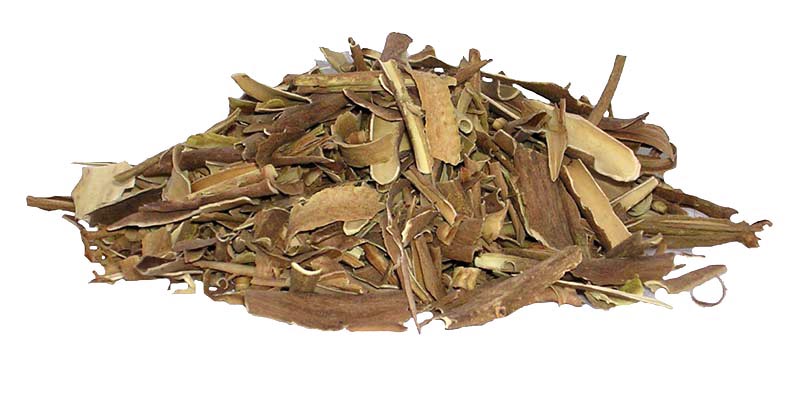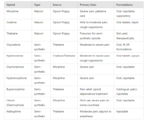Hydrocodone is a prescription painkiller from the opiate family. It works by attaching to opiate receptors in the brain, resulting in a decrease in pain perception. Hydrocodone is prescribed to relieve mild to moderate pain associated with conditions including arthritis, back pain and physical injury. There are a number of herbal alternatives to hydrocodone. Some produce painkilling effects closely comparable to the drug.
Hydrocodone can stop your breathing. Especially if you’re over 60. And if you have a glass of wine while the drug is in your system, you can easily die from respiratory failure.
There’s no reason to take harmful drugs. But chronic pain makes life harder than it should be. You can take a natural approach to get relief and heal your body without the danger of addiction or death.
These several painkillers will get you back in action:
5-Hydroxytryptophan
5-HTP is what makes serotonin, the hormone that regulates mood and sleep. That’s why 5-HTP is used to treat depression, anxiety, insomnia, and even panic attacks. But 5-HTP is also great at treating headaches and migraines.3 In fact, it’s better than any drug you could take…
One study shows that taking 5-HTP can even replace painkillers to treat headaches. But unlike any painkiller on the market…it also keeps headaches from returning.4
Eating foods rich in tryptophan like turkey, walnuts, and tomatoes will help naturally boost 5-HTP. But that may not be enough. If you want to see the full benefits, start by taking 50 mg before a meal. Eventually you can build up to 300 mg a day. That is the ideal dosage for relieving headaches.
Kratom
Kratom (Mitragyna speciosa) is hydrocodone’s closest herbal relative. It has been used in Asian countries for centuries for its ability to decrease pain and fatigue, allowing workers to continue in spite of discomfort. In small doses, it produces stimulating effects. Larger doses can lead to sedation.
While not an opiate itself, kratom is a mu-opioid agonist that affects the same brain receptors as opiates such as hydrocodone. Effects include increased pain tolerance, improved mood and feelings of intoxication.
Like hydrocodone, kratom has the potential to cause addiction and withdrawal. According to Erowid, peasant workers in Asia frequently become addicted to the herb and suffer withdrawal upon cessation. Kratom is illegal in Thailand and many other nations but is not currently scheduled in the U.S. Those who choose to use kratom should do so with extreme caution and only under a doctor’s supervision.

Like hydrocodone, kratom leaf is a mu-opioid agonist and effective painkiller.Photo Credit kratom image by jahmaik from Fotolia.com
Ginger
Using ginger as medicine goes back to the ninth century. Many cultures still use it today to treat everything from colds to cancer.5Ginger has potent anti-inflammatory properties.
One study shows ginger relieves arthritis pain. In the study, 63 percent of subjects taking a ginger supplement saw a decrease in osteoarthritic knee pain.6 The group taking ginger extract also saw an improvement in their overall pain.
Just be careful not to overdo it when using fresh ginger. Some people are very sensitive. Start small and build your way up to avoid digestive issues.
Willow Bark
Willow bark is among the most popular and effective anti-inflammatory herbs. It contains salicylin, the same active compound as aspirin (salicylic acid). According to the National Institutes of Health, willow bark is superior to placebo in relieving the pain of osteoarthritis and is well tolerated by most patients. It may also be useful for treating other types of inflammatory pain, such as that associated with minor injury, toothache, menstrual cramps and burns or cuts.
Like aspirin, willow bark may increase the risk for stomach bleeding, especially when taken with NSAID pain relievers such as ibuprofen or naproxen.

Krill Oil
You already know the health benefits of fish oil. But krill oil is an even more effective way to get omega-3 fatty acids. That’s because it contains liposomes that drive the fatty acids directly into your cells. This is key to quickly feeling the benefits of taking a fish oil supplement.
One study shows that 300 mg each day lowers inflammation by 20 percent in just seven days. After 30 days, inflammation had decreased by over 30 percent.7 If you suffer from inflammatory pain, krill oil is your fastest path to natural healing.
Cayenne
Known more for its hot and spicy flavor than its painkilling ability, cayenne pepper is sometimes used to treat joint pain in patients with certain types of arthritis. It contains capsaicin, which acts as a counterirritant when applied to the skin and distracts the brain from underlying pain.

When taken internally, cayenne causes a burning sensation in the mouth, which triggers the release of endorphins in the brain. Endorphins are naturally occurring chemicals that produce effects similar to those of hydrocodone and other opiates, including improved mood and increased pain tolerance.
Capsaicin
Capsaicin is what gives peppers their heat. Many cultures have used it as a medicine for centuries. But it’s no surprise why… It helps relieve even the worst arthritis pain.
Arthritic patients in one study had an 80 percent decrease in their pain after just two weeks of topical capsaicin use. The compound greatly lowered pain even in people already taking arthritis medications.
It’s easy to see why capsaicin is the active ingredient in a variety of ointments that help ease arthritis pain.
Valerian Root
Sometimes referred to as “nature’s Valium,” valerian root is a wildly popular herbal supplement in the U.S. It’s native to Europe but grows freely in many parts of the world and has been used traditionally to treat everything from nervousness to epilepsy.
The active compound in valerian root is valerenic acid, which affects the same neurotransmitters as benzodiazepines like diazepam (Valium). In addition to its calming effects, valerian root is a mild muscle relaxant and may reduce spasms that cause certain types of pain. According to Medline Plus, valerian root can be used to treat the pain of menstrual cramps, angina, nerve pain and rheumatic pain, though evidence for its effectiveness is inconclusive.
Cissus Quadrangularis
The name may sound silly, but this vine comes with serious benefits. Cissus quadrangularis (CQ) promotes bone health and reduces pain. This is why CQ is gaining popularity among elite athletes. But you don’t have to be an athlete to experience its benefits.
One study followed 29 healthy men. It shows that taking 3 mg daily for eight weeks reduced joint pain from exercise by 31 percent. CQ is easy to find in pill form online and in many health stores.
If you suffer from chronic pain, you aren’t alone. But that doesn’t mean you have to rely on dangerous and potentially addictive painkillers to make it through the day.
Pain Medications, Pain Relief, and Pain Management



